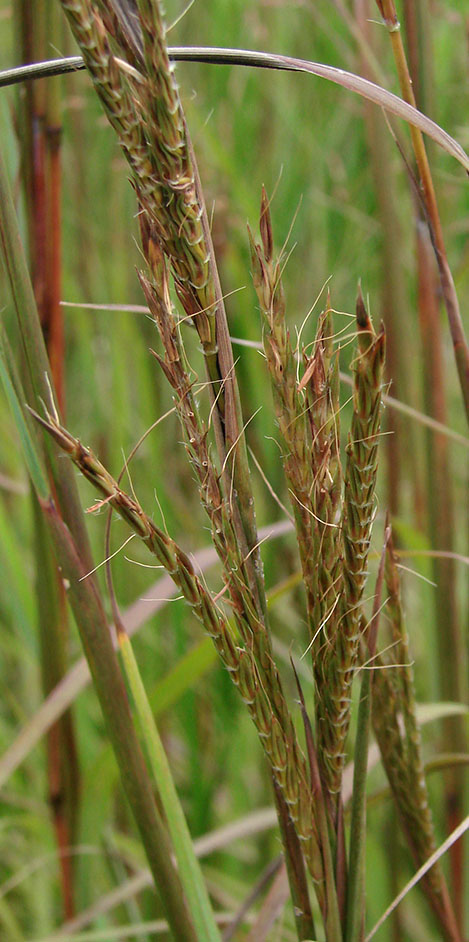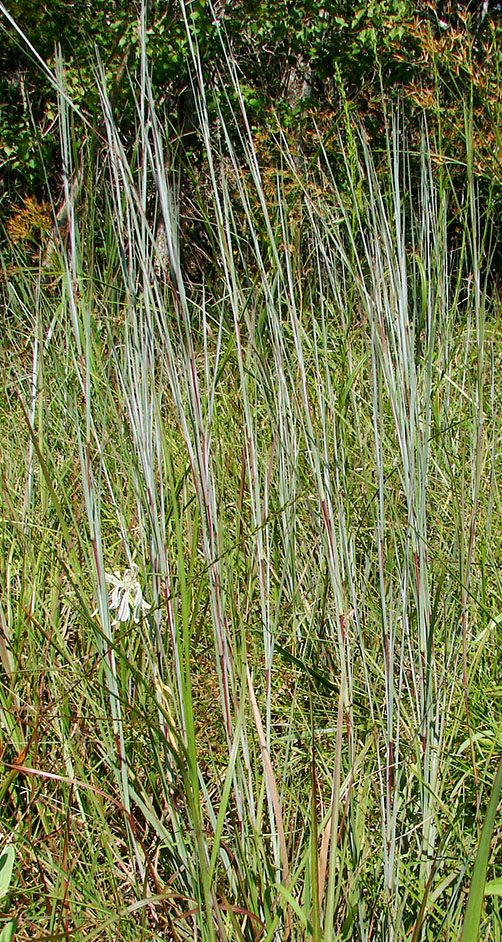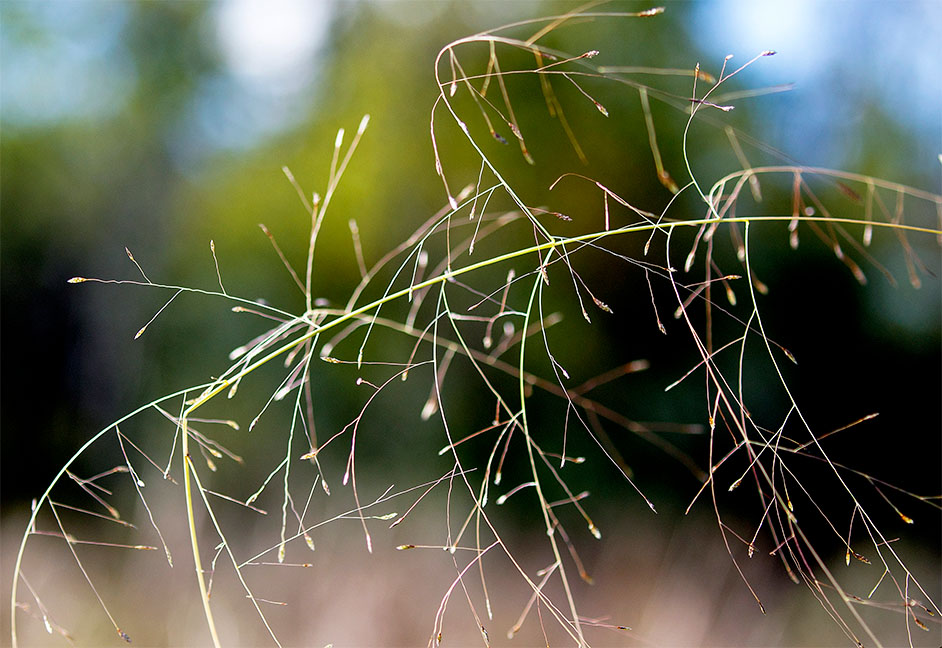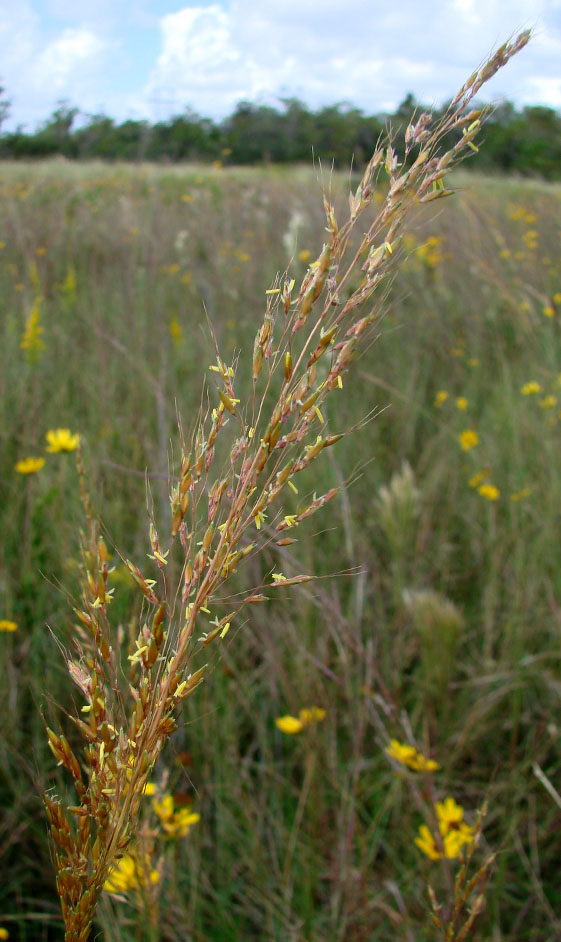
Left to Right: Blue mistflower (Conoclinium coelestinum), green milkweed (Asclepias vidris), and sugarcane plumegrass (Saccharum giganteum).
While the UH Coastal Center contains multiple types of habitat, coastal prairie is the highlight. At the core is the 100-acre Aumann Prairie, named in memory of Dr. Glenn Aumann, a former UH provost and former UH Natural Sciences & Mathematics dean, who was an enthusastic supporter of UHCC.

The Aumann Prairie, which has never been plowed, represents a slice of what used to be a vast expanse of coastal prairie habitat along the Texas and Louisiana Gulf Coast. It is estimated that of the 6.5 million acres of coastal prairie originally blanketing the Texas Gulf Coast, less than 1% remains. The high-quality Aumann Prairie is where UHCC’s coastal prairie management program began and represents the goal of our ongoing restoration work.

The hallmark of coastal prairie is the domination of the relatively flat space by native perennial grass species and a marked absence of trees, except along riparian or wetland areas or as isolated clumps. The UHCC coastal prairie contains all of the “Big Four” of coastal tallgrass prairie: Big Bluestem, Little Bluestem, Switchgrass, and Yellow Indiangrass. However, as a representative of high-quality coastal praire, UHCC is home to a high level of plant biodiversity. Over 364 species of plants have been identified at UHCC. Our herbarium collection includes representatives of most of these.

Currently, just over 300 acres at UHCC are actively managed as coastal prairie habitat or in the process of restoration. We employ mowing, herbiciding, and prescribed burning (related video) to manage our restored coastal prairie units. Areas which were once coastal prairie and which have been degraded by invasive species undergo restoration through a series of treatments involving initial mechanical removal of invasive woody species. This treatment is followed by a combination of shredding, herbiciding, mowing, and prescribed burning.
In areas heavily infested by dense, tall stands of Chinese tallow trees, aerial application of selective herbicide (related video) is an option as the initial restoration step. However, the total of suitable acreage to be sprayed and the costs of equipment mobilization are decisive factors in determining whether this methodology is economically feasible.
The exact combination and timing of restorative actions depends upon site characteristics.

The UHCC lies within the Highland Bayou watershed and has experienced recent and historic flooding. During winter months when grasses and forbs are dormant, it is common to see standing water on parts of the prairie. Yet during the summer, when rainfall is sparse, coastal prairie plants can still survive, thrive, and set seed to begin another seasonal cycle. This is because one of the benefits of coastal prairie habitat is that their native plant species evolved to withstand climate conditions ranging from flooding to drought.
Prairies also evolved with fire and grazing by bison, which is why we are able to successfully utilize prescribed fire as one of our coastal prairie management tools. Within days of a prescribed burn, the coastal prairie will return to green from black. A coastal prairie burned at the beginning of the year will experience a succession of flowering species—forbs and grasses—in subsequent months of the year, all of which will set seed in preparation for another cycle of seasonal plant succession (related video) the following year.